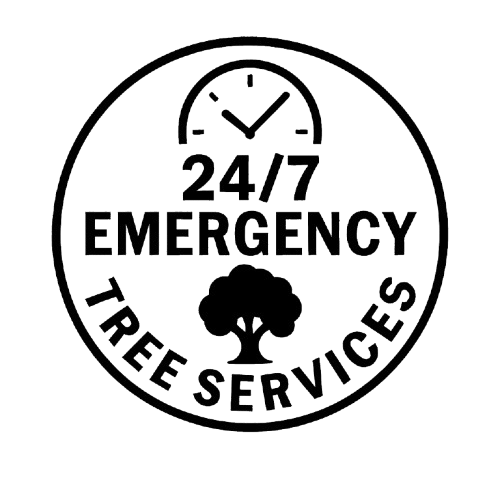New York City’s Urban Forestry

The maintenance and control of urban tree populations—essential to a city’s environment—is known as urban forestry. In a metropolis like New York City, urban trees enhance air quality, reduce the heat island effect, promote biodiversity, and provide various environmental, social, and economic benefits. However, with the increasing impacts of climate change, urbanization, and budget constraints, the future of urban forestry in New York City faces significant challenges. This article explores the current state of New York City’s urban forests, the hurdles they face, and the opportunities available to secure a greener future. Key Takeaways: Urban Forestry is Crucial for Environmental and Health Benefits: Trees in urban areas are more than just aesthetic additions—they are essential for maintaining ecological balance, improving air quality, and reducing heat in dense city spaces. Furthermore, urban forests offer significant social and health advantages, including better mental health, building community, and giving city people more access to green areas. Climate Change and Urbanization Present Major Challenges: The future of urban forestry in New York City is threatened by the escalating impacts of climate change, such as more frequent storms and rising temperatures. Furthermore, the limited space availability in the densely packed urban environment poses a significant challenge for expanding tree coverage. Technology and Community Engagement Offer Promising Solutions: With the advancement of technologies such as GIS mapping, drone monitoring, and data analytics, urban forestry management can become more efficient. Furthermore, maintaining the viability of New York City’s urban woods in the future would require involving the local community and establishing public-private partnerships. Importance of Urban Forestry Urban forestry is pivotal in enhancing the livability of cities like New York. Planting and keeping trees in urban areas can improve their aesthetic appeal and generate significant environmental, social, health, and economic advantages. These advantages underscore the need to prioritize urban forests, especially as cities grow and face increasing ecological challenges. Environmental Benefits Urban forests significantly contribute to improving environmental quality. One of the primary benefits is reducing air pollution. When dangerous pollutants like carbon dioxide (CO2), sulfur dioxide (SO2), and nitrogen dioxide (NO2) are absorbed by trees, the air is filtered and the quality of the air is generally improved. The health of inhabitants in a busy metropolis like New York City, where industrial and vehicular pollutants are constant, depends on trees’ ability to purify the air. Furthermore, urban trees help reduce the urban heat island effect, which results from infrastructure and human activity, raising temperatures in cities noticeably above those in nearby rural areas. Trees provide shade and release moisture through transpiration, which cools the air and reduces the overall temperature in cities. This cooling effect helps conserve energy by reducing the demand for air conditioning, especially during peak summer months. Consequently, well-maintained urban forests contribute to lowering energy consumption and help combat climate change by sequestering carbon. Social and Health Benefits Beyond the environmental advantages, urban forests are crucial in promoting mental and physical well-being. Trees and green spaces offer New Yorkers a refuge from the concrete jungle, providing relaxation, recreation, and exercise areas. Several studies have shown the positive effects of urban forests on mental health, including the reduction of stress, anxiety, and depression. Additionally, urban forestry promotes outdoor activity. Parks and tree-lined avenues offer possibilities for physical exercise, which is crucial for preserving good health, whether you choose to walk, jog, or participate in community events. Moreover, trees in urban settings enhance biodiversity by providing habitats for birds, insects, and small mammals, thus fostering ecological balance within the city. Economic Advantages Urban forestry brings various economic benefits, making cities greener and more financially sustainable. Trees raise property values by enhancing the beauty and desirability of neighborhoods. A tree-lined street or a nearby park can increase real estate prices, benefiting homeowners and local governments through higher property tax revenues. Urban forests also attract tourism. Tourists are drawn to cities with scenic parks, walking trails, and aesthetically pleasing landscapes like Central Park or the High Line in New York City. These attractions boost the local economy, providing business revenue and supporting jobs in the tourism and service industries. In addition, urban forests help reduce infrastructure costs. Trees act as natural stormwater management systems by absorbing rainfall, reducing runoff, and decreasing the burden on stormwater systems. Urban forestry can help cities save on long-term maintenance and repair costs by minimizing the need for expensive drainage infrastructure. Current State of New York City’s Urban Forest New York City’s urban forest, a vital part of the city’s infrastructure, includes a diverse range of tree species spread across parks, streets, and private properties. Over the years, various governmental efforts, public-private partnerships, and community-driven initiatives have worked to expand and maintain this green canopy. However, as the city continues to evolve, understanding the current state of its urban forest is essential for making informed decisions about future growth and sustainability. Tree Count and Coverage New York City boasts an extensive network of trees, with estimates suggesting the city is home to over 7 million trees. These trees are spread across parks, streets, and private properties, contributing to an overall urban tree canopy that covers around 22% of the city’s land area. While Central Park and other large parks contain some of the densest tree populations, significant tree-lined streets, green medians, and community gardens contribute to this greenery. Species diversity is a critical component of a resilient urban forest. New York City’s urban forest includes a wide variety of species, helping to protect against diseases and pests that may target specific types of trees. Some include: Tree Species Percentage of Total Trees London Planetree 15% Honeylocust 13% Callery Pear 9% Pin Oak 8% Ginkgo 6% American Elm 4% Governmental Efforts New York City’s Parks Department plays a central role in managing the urban forest, including the planting and maintaining of street trees, park trees, and natural forests within the city’s park system. One of the most ambitious efforts in recent years has been the MillionTreesNYC initiative, launched in 2007. This initiative,




